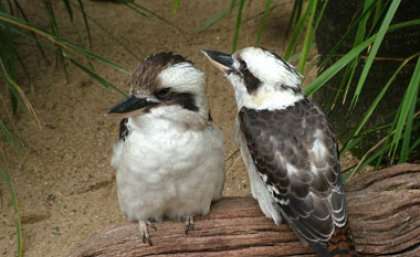Wildlife hospitals save 16,000 animals in four years

Birds are the most commonly rescued wildlife in Queensland, with the laughing kookaburra among our hardiest species, according to new research from The University of Queensland's Gatton Campus.
Masters student Marisol Torregrosa Rocabado and honours student Archibald Bouchon-Small tracked animal rescues from three wildlife hospitals in South East Queensland over four years for their research.
They found that from 2009-2013, 80,000 animals were rescued, with 16,000 animals being successfully rehabilitated and released back into the wild.
"Fifty per cent of all animals brought into care are birds and most of the species identified are abundant and widespread," Mr Bouchon-Small said.
"It was interesting that the survival rate of the laughing kookaburra is 34 per cent - twice the average survival rate of birds. This kind of data shows us the areas and the species where we can make the most difference."
Rainbow lorikeets were the bird species most commonly admitted to wildlife hospitals, followed by Australian magpies, tawny frogmouths, the laughing kookaburra and finally noisy miners.
Ringtail possums were the most commonly rescued mammals, followed by brushtail possums, koalas, black flying foxes and eastern grey kangaroos.
Mr Bouchon-Small said the findings highlighted the important role hospitals played in the welfare and conservation of wildlife.
"We tracked the animals, looking at the cause of admission, length of stay in rehabilitation and the outcome for each animal," he said.
"Strong seasonal trends were identified, with a marked increase in animals being admitted during spring and summer coinciding with the breeding season of most species."
Senior Lecturer in Wildlife Behaviour and Welfare Dr Andrew Tribe said the results showed how little was known about current rehabilitation procedures.
"This study shows how important accurate record-keeping is to track what is happening with our wildlife," Dr Tribe said.
"Good record-keeping by the hospitals allowed us to track this data, but there were some inconsistencies between the hospitals. It would be helpful if record-keeping was standardised."
The data was collected from South East Queensland's three largest wildlife hospitals: the Australia Zoo Wildlife Hospital, Currumbin Wildlife Sanctuary Hospital and the Royal Society for the Prevention of Cruelty to Animals Queensland Wildlife Hospital.
Provided by University of Queensland

















